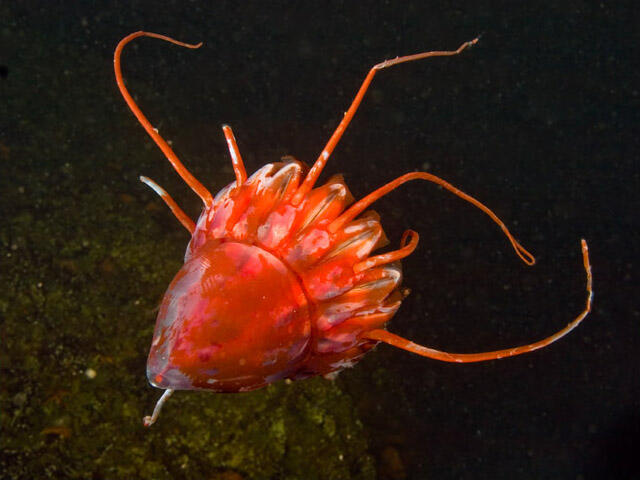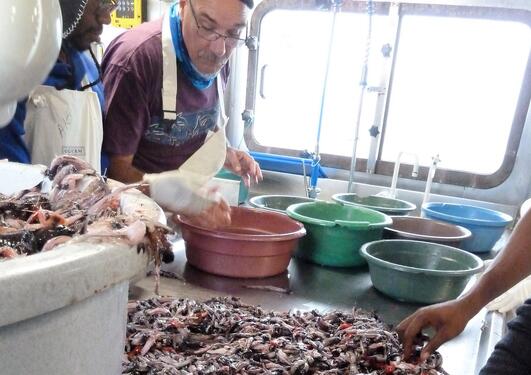“PRIMA Learning” jellyfish workshop in Cape Town in February 2023

Main content
Main article written by: Mark Gibbons and Anne Gro Vea Salvanes.
Jellyfish are important as predators and prey in coastal and oceanic ecosystems, and any fluctuation in their abundance above/below the long-term baseline is an indication of a system in imbalance. However, they are not the easiest animals to identify and yet without a knowledge of identity it is difficult to understand or manage them.
In an effort to address this, scientists and students from African and Norwegian universities and research institutions participated in an international workshop on the identification of gelatinous zooplankton in Cape Town for five in February 2023. The workshop was organised as part of a mobility project (PRIMALearning) between the University of Bergen (UiB), Norway and the University of the Western Cape (UWC), South Africa and it built on the specialized training of African students in multifrequency hydro-acoustics held in Bergen at an earlier date. The project is conducted in collaboration with the EAF Nansen Programme, which is funded by the FAO (UN) and NORAD, with implementation via the Norwegian Institute of Marine Research (IMR). The jellyfish workshop was organised by Mark Gibbons and his PhD student Michael Brown from UWC, with co-teachers Aino Hosia and Luis Martell-Hernández from the UiB’s museum. The workshop was held at the Iziko South African Museum in Cape Town’s historic Company Gardens.
Following a welcome to the museum by Dr Wayne Florence (Director of Research and Exhibitions), and a summary of the PRIMALearning project by Anne Gro Vea Salvanes and Mark Gibbons, participants introduced themselves and outlined their expectations for the week ahead. In the first presentation of the day, Michael Brown emphasized that a modern understanding of identity is based on integrative taxonomy, which in the case of jellyfish involves not only pulling together meristic observations and morphological measurements with various DNA sequences but must also include a knowledge of life-cycles and ecology. Thereafter, lectures on the anatomy of the different groups of jellyfish (Scyphozoa, Cubozoa, Siphonophora, Hydromedusae – one per day) were followed by practical sessions, wherein learners got the chance to see and identify representatives of the diverse medusozoan fauna found around Africa and apply the knowledge gained in earlier sessions. Learners were guided in the latter by the experts and were assisted by the relevant literature, including the recent FAO publication “Identification guide to macro jellyfish of West Africa” (Gibbons et al., 2022). One of the key objectives of the workshop was to get learners to describe a jellyfish specimen as fully as possible, using formal conventions, so that when confronted with the unknown, it would still be possible to arrive at some form of identification.
In a round-table discussion at the end of the week’s activities, it became apparent that the majority of the learners’ expectations had been exceeded and most were now quite comfortable with putting a name to a face, so to speak. They particularly appreciated it when lectures and practical classes were combined, as they could immediately relate theoretical anatomy to real anatomy on the specimen at hand, and this is a lesson we can take forward. They also welcomed the chance to connect with others interested in jellyfish and it is hoped that the networks developed will sustain participants into the future.

Clockwise from top-left: Learners get their hands dirty in the laboratory taking measurements and making observations on scyphozoan anatomy under the instruction of Michael Brown; in the biodiversity lab, Luis Martell-Hernández gives learners a chance to examine microscopic hydrozoans; the lawns at the top of the Company Gardens of Cape Town, with Iziko South African Museum in the back.

